
1. Eat Breakfast Every Day
Skipping breakfast is a lot like skipping rope: neither gets you anywhere. Although lots of people think they’ll cut calories by cutting breakfast, the opposite is true. Studies show that eating breakfast helps you consume fewer total calories for the day. One national U.S. health and nutrition survey found that men who eat breakfast weigh about 2.7 kilograms (6 pounds) less than men who skip it; women weigh 4 kilograms (9 pounds) less. And a 10-year study of almost 2,400 adolescent girls showed that those who ate any kind of breakfast had lower BMIs than girls who did not. People who eat cereal for breakfast have lower BMIs than people who skip breakfast or dine on meat and eggs.
Here are 9 Good-for-You Cereal Hacks for a Healthier Breakfast Bowl.
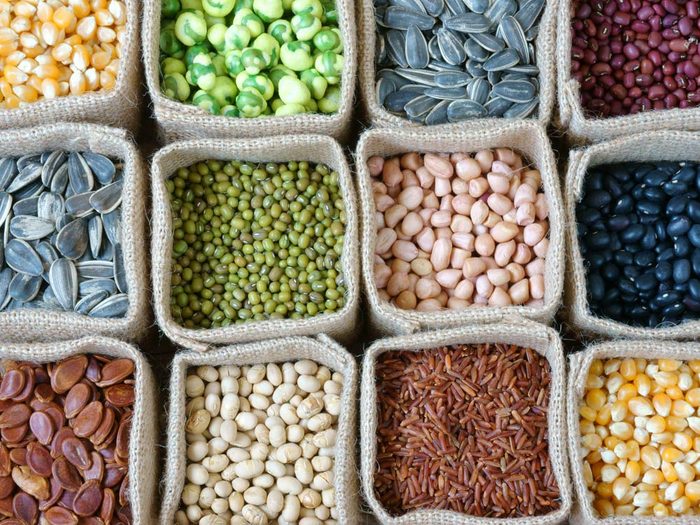
2. Eat High Fibre Foods
Eat a bowl of brown rice topped with chickpeas and sautéed vegetables for lunch, and it’s likely you won’t want another bite until supper. High-fiber foods like these have few calories, little fat, and lots of bulk, which keeps you full. They’re also digested slowly, which means your blood sugar stays at an even keel instead of rapidly spiking and falling, which leaves you hungry again in no time. Whole grains also provide nutrients, such as magnesium and vitamin B6, that many weight-loss diets are deficient in. A great way to get a good dose of fibre is to start your day with high-fibre cereal.
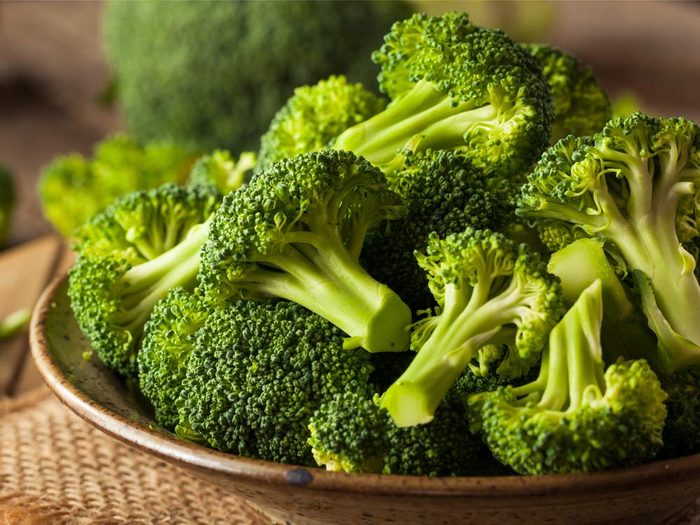
3. Eat Raw, Leafy Green Vegetables
Head for the salad bar. Greens and raw vegetables like carrots, zucchini, and broccoli are remarkably low in calories but high in water and slow-digesting fiber, so they tend to fill you up. Squelching your appetite isn’t the only reason to frequent the produce section. In a study of almost 18,000 people, researchers found that those who ate salads often had higher levels of vitamins C and E, folate, and carotenoids, important for overall health, than people who had fewer salads. Researchers have also found that people who eat a vegetarian diet weigh an average of 3 to 20 per cent less than meat eaters. And a study at George Washington University School of Medicine found that overweight women on a low-fat plant-based diet who were allowed to eat as much as they wanted lost an average of 5.4 kilograms (12 pounds) in 14 weeks compared with 3.6 kilograms (8 pounds) in the control group.
Check out these 12 Foods You Had No Clue You’ve Been Eating All Wrong.
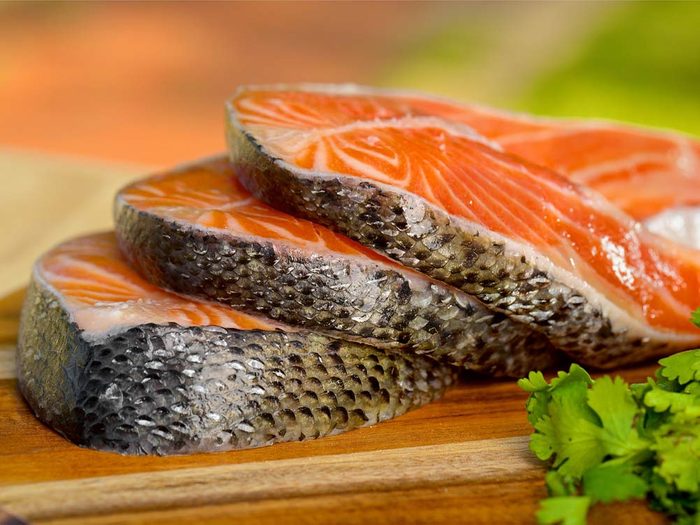
4. Turn to Fish, Chicken and Beans for Protein
We’re not advising a high-protein, low-carb diet (short-term studies of these diets do show improved weight loss, but the diets don’t seem to have any advantage over other diets in the long term), just that you make it a point to eat some protein with every meal (and every snack, too). Other studies have shown that people on high-protein diets that are also rich in “slow-burning” carbohydrates low on the glycemic index (such as fruits and vegetables, beans, and whole-wheat pasta) are less hungry and lose more weight than people on low-protein, high-carbohydrate diets.
Getting enough protein when you’re dieting also helps you lose fat, not muscle. For instance, in a small 10-week study, one group of women ate 275 to 300 grams (9 to 10 ounces) of protein a day for 10 weeks and a reduced amount of carbohydrates. The control group ate about half that amount of protein and about a third more carbohydrates. Although both groups took in the same number of calories and lost about 7.7 kilograms (17 pounds), the women on the higher-protein diet lost 1 more kilogram (2 pounds) of fat and 450 grams (1 pound) less muscle than the control group. Don’t overdo protein, though. People with type 2 diabetes, which often affects the obese, are at greater risk for kidney disease, and overeating protein may increase the problem.
These tasty recipes combine your favourite seafood with nature’s best brain-boosting ingredients.
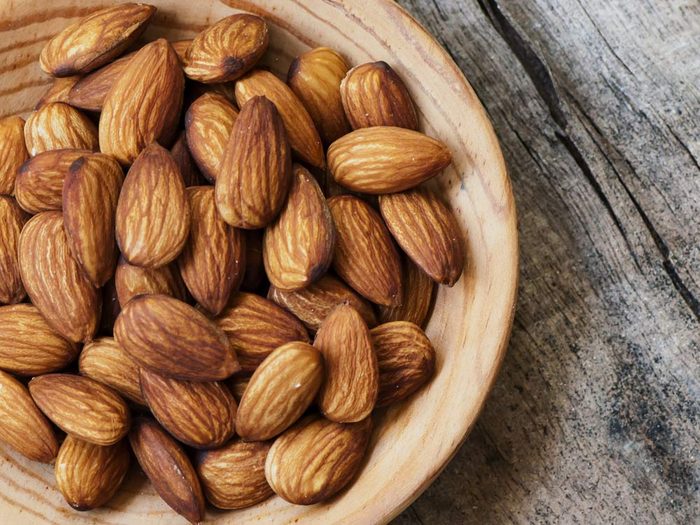
5. Eat Healthy Nuts
Nuts are crunchy, salty—and no longer forbidden. Even though nuts are fatty, they may help you shed weight, according to a number of studies. Researchers believe that the healthy fat in nuts helps people feel full, and the protein may use up calories as it digests. Large studies have found that people who eat nuts regularly have lower BMIs than those who don’t. In a study of 65 obese adults at City of Hope National Medical Center in Duarte, California, for example, one group added 90 grams (3 ounces) of almonds to a 1,000-calorie liquid diet; another group added complex carbohydrates like popcorn or baked potatoes. Both groups ate roughly the same number of calories and amount of protein, but the almond diet had more than double the fat, primarily healthy monounsaturated fat. Over 24 weeks, the people on the almond diet reduced their weights and body mass indexes by 18 per cent compared with 11 per cent in the carbohydrate group. Both groups lowered blood sugar, insulin levels, and insulin resistance, which can lead to weight gain—but almost all the diabetic participants in the almond group were able to control their blood sugar on less medication, compared to only half of those in the carb group.
Check out these 11 Surprising Home Remedies for Constipation.
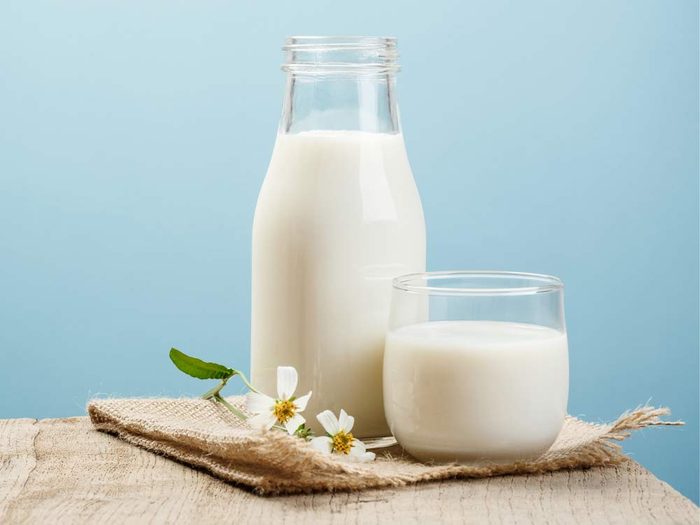
6. Get Plenty of Calcium
Calcium, it turns out, may play a part in how fat is broken down and stored. The more calcium in a fat cell, the more fat it burns. In a study of obese adults, one group ate three 175-gram (6-ounce) servings of fat-free yogurt containing 1,100 milligrams of calcium per day. The other group ate one serving of dairy food containing 400 to 500 milligrams of calcium per day. Both groups also reduced their daily calories by 500. The yogurt group lost an average of more than 6.3 kilograms (14 pounds) compared to an average loss of 5 kilograms (11 pounds) in the low-calcium group. The yogurt group also lost 81 percent more fat from their stomachs. Although studies have found low-fat dairy foods most effective, calcium from other sources, like broccoli or fortified orange juice, works, too. Despite the positive studies, the jury is still out on this issue. While we wait for final answers, though, eating three servings of low-fat dairy products a day remains a healthy choice.
Or, take a break from cow’s milk and explore these five healthy alternatives.